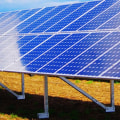Similarly, significant solar deployment rates continue in the 2030s and beyond. do solar energy systems get clean and pure energy from the sun. Installing solar panels in your home helps combat greenhouse gas emissions and reduces our collective dependence on fossil fuels. The United States can get 40% of the country's electricity supply by 2035 and 45% by 2050 with solar energy, a new U.S.
UU. As the United States commits to reducing carbon emissions by 50% to 52% by 2030, achieving carbon-free electricity by 2035, and achieving carbon neutrality by 2050, studies such as these pave the way for bold action at both the state and federal levels.
solar energy
uses several different technologies to convert light and heat from the sun into electricity. Unlike burning coal, solar energy doesn't produce the greenhouse gases that cause global warming.The shift to clean energy, such as solar and wind, will create about 3 million U.S. jobs and reduce consumers' energy bills. Improved ways to store solar energy can also strengthen the resilience of the power grid. By storing additional energy from sunny days, solar batteries make power available during the cloudiest days or when storms break traditional power lines.
That means more reliable power at a lower cost, says study. And other nations can benefit in a similar way. Solar energy is now cheaper than coal in some parts of the world, and generating energy from the sun is likely to be the world's lowest cost energy option in less than ten years, according to Bloomberg. In many parts of the world, solar energy is already the lowest-cost option.
As the fight against climate change accelerates, so will the demand for renewable energy sources. Solar energy will play an important role in mitigating climate change around the world. In the future, solar energy will undergo an astonishing transformation, such as telecommunications with flat call rates. This is because more people will enjoy cheaper utility bills and more savings from using solar energy.
Recently, lab-tested four-layer solar cells can capture 46% of the incoming light energy that reaches them. West Coast energy provider Pacific Gas & Electric has committed to making renewable energy, including solar, 55 percent of its energy portfolio by 2031. Mobike bicycles have a solar panel in the bicycle basket, which connects the bike's lock and GPS to a phone application, so that customers can easily locate, reserve and unlock bikes they want to use. Like cells with multiple layers, thin-film solar cells are a bit difficult to manufacture, limiting their application, but research is ongoing. If the solar cell always points to the sun, it will be hit by many more photons than if it were only pointing at the sun around noon.
The size of this energy gap is important because it affects the efficiency with which solar cells convert light into electricity. Together, technologies such as transparent solar panels and solar shingles could bring solar energy into the mainstream (learn more about the best solar panels on PowerScout). Solar shingles look identical to normal shingles, whether you have basic gray shingles, slate shingles, or Spanish clay shingles. Currently, the cost of silicon-based solar cells continues to decline and, despite predictions to the contrary, the cost of silicon itself continues to decline.
Another way to improve the performance of solar cells is to target their efficiency so that they can better convert sunlight energy into electricity. Most exciting of all, solar energy will be extended to developing countries in the form of microgrids, decentralized electricity production facilities that provide energy to a limited area such as a village, neighborhood, or a group of neighborhoods. Both scenarios lead to inefficiencies in solar collection, making the choice of solar cell material important. Research conducted by NREL suggests that every $1 savings on your energy bill due to the installation of a solar power source adds approximately $20 to the existing value of your property.
Finally, once the solar panels are installed, electricity production will be emission-free and will require a small amount of water. . .







